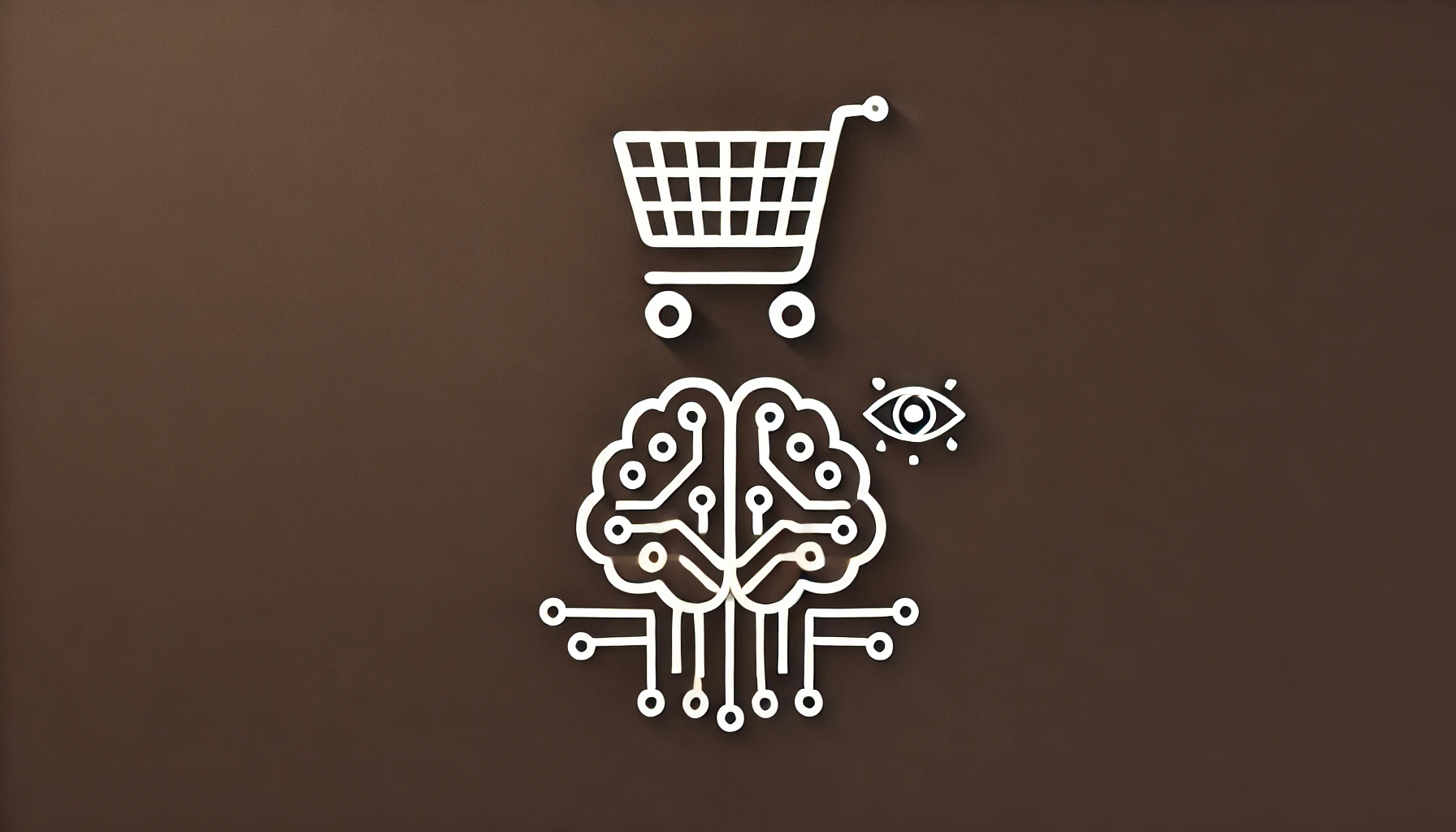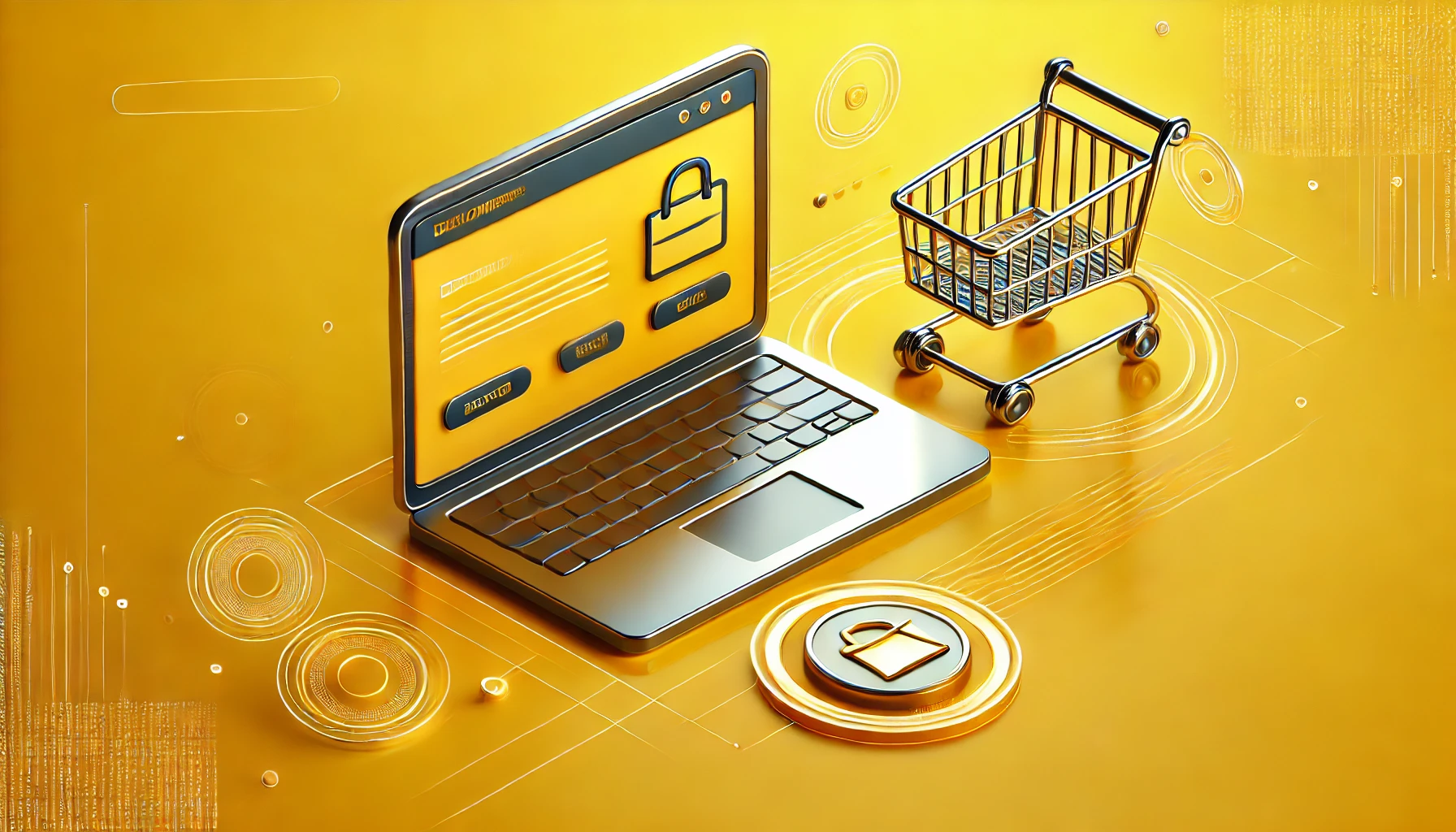Introduction
The e-commerce industry has evolved into a multi-faceted domain with various models tailored to different needs. From established corporations to independent sellers, e-commerce platforms facilitate a vast range of transactions, each with unique dynamics. For businesses, understanding the differences between these e-commerce types — B2B (Business-to-Business), B2C (Business-to-Consumer), C2C (Consumer-to-Consumer), C2B (Consumer-to-Business), B2G (Business-to-Government), and D2C (Direct-to-Consumer) — is crucial for making informed decisions that align with strategic goals.
Each e-commerce model caters to distinct audiences, demands unique operational features, and presents specific opportunities and challenges. This guide will explore these types, discussing how each model works, its key characteristics, and practical examples. For businesses embarking on ecommerce website development, this comprehensive breakdown will aid in choosing the most suitable model to meet your target audience’s needs and streamline operations.
1. Business-to-Business (B2B) E-Commerce
What is B2B E-Commerce?
B2B (Business-to-Business) e-commerce focuses on transactions between businesses. This type of e-commerce website allows manufacturers, wholesalers, and distributors to connect directly with other companies to sell their products or services in bulk or through long-term contracts. Common examples of B2B e-commerce platforms are Alibaba, Global Sources, and ThomasNet, which cater to companies in search of reliable suppliers or wholesale partners.
Key Features of B2B E-Commerce Websites
B2B websites have distinctive features that accommodate larger transactions and complex business relationships:
- Bulk Orders and Pricing Options: B2B websites often support large orders with bulk discounts or tiered pricing models. This structure helps clients save more as they purchase larger quantities.
- Personalized Quotations: Due to the nature of B2B transactions, which may vary in scale and contract terms, many B2B websites offer custom quotes, allowing for flexibility in pricing.
- Order Management Systems: B2B platforms typically have advanced order management systems to streamline purchasing, billing, and shipping, making the process more efficient for businesses managing frequent orders.
Benefits of B2B E-Commerce
B2B e-commerce is particularly beneficial for companies looking to grow by acquiring regular, large-scale buyers:
- Higher Order Value: Since B2B transactions usually involve bulk purchases, the order value is often significantly higher than that of typical B2C transactions.
- Repeat Business: B2B companies often establish long-term relationships, leading to consistent revenue and repeat orders.
- Enhanced Customer Retention: Due to established business relationships, B2B companies tend to have strong customer loyalty, with clients returning for quality and reliability.
Challenges of B2B E-Commerce
- Long Sales Cycles: B2B transactions often involve multiple stakeholders, leading to longer decision-making processes.
- Customization Needs: B2B clients may require specific customizations, such as tailored product designs or flexible delivery terms, which can strain resources and processes.
B2B e-commerce presents a promising avenue for growth, but it requires a well-organized system that accommodates large orders and long-term commitments. Successful B2B e-commerce development depends on providing clients with personalized, efficient, and secure experiences that facilitate trust and convenience.
2. Business-to-Consumer (B2C) E-Commerce
What is B2C E-Commerce?
B2C (Business-to-Consumer) e-commerce is the most commonly recognized form of online commerce, involving transactions between businesses and individual consumers. Unlike B2B e-commerce, B2C platforms cater to the general public, offering a vast selection of goods and services with a focus on user experience. Popular examples of B2C platforms include Amazon, Walmart, and Zappos.
Key Features of B2C E-Commerce Websites
B2C e-commerce platforms prioritize user-friendly interfaces, attractive pricing, and easy navigation to appeal to a broad consumer base:
- Intuitive Design and Navigation: B2C sites are designed for convenience, enabling consumers to browse products and make purchases quickly.
- Discounts and Loyalty Programs: B2C businesses frequently offer sales, discount codes, and loyalty programs to drive customer engagement.
- Secure Payment Options: B2C platforms provide multiple payment options with high levels of security to protect customer data and payment information.
Benefits of B2C E-Commerce
B2C e-commerce provides businesses with a streamlined way to reach and engage with consumers on a large scale:
- Wider Reach: B2C websites attract a larger audience, enabling companies to grow their customer base quickly.
- Consumer Insights: B2C platforms allow businesses to gather valuable consumer behavior data, facilitating targeted marketing and product customization.
- Lower Overhead: E-commerce reduces the need for physical retail spaces, decreasing operating costs.
Challenges of B2C E-Commerce
- High Competition: With many brands competing in the B2C space, companies must innovate continuously to stand out.
- Retention: Unlike B2B, where long-term relationships are the norm, B2C companies must work harder to encourage repeat purchases through superior customer experiences.
B2C e-commerce requires a robust strategy centered on customer engagement and retention, focusing on user experience, secure transactions, and data-driven insights. For companies exploring ecommerce website development, B2C models offer a broad range of possibilities to engage with and serve individual consumers.
3. Consumer-to-Consumer (C2C) E-Commerce
What is C2C E-Commerce?
C2C (Consumer-to-Consumer) e-commerce enables individuals to sell products directly to other consumers. This model is popular among platforms where people can buy or sell second-hand, unique, or rare items, such as eBay, Craigslist, and Poshmark.
Key Features of C2C E-Commerce Websites
C2C platforms are designed to facilitate transactions between individual sellers and buyers:
- Auction and Bidding Options: Many C2C sites allow users to auction their items, enabling buyers to bid on products until a winner is chosen.
- Rating and Review Systems: Trust is essential in C2C transactions, with platforms typically implementing review systems to help buyers make informed choices.
- Intermediary Payment Systems: C2C platforms often handle payments to ensure secure transactions and reduce risks associated with direct person-to-person payments.
Benefits of C2C E-Commerce
C2C e-commerce is particularly beneficial for individuals seeking flexibility and low-cost entry into online selling:
- Minimal Investment: Individuals can start selling on C2C platforms with little to no investment, leveraging their existing goods or skills.
- Unique Product Offerings: Many C2C platforms are known for offering items not found in regular retail, such as vintage goods, collectibles, or handmade products.
- Flexibility for Sellers: Sellers can set their own prices, list as many or as few items as they like, and manage their business independently.
Challenges of C2C E-Commerce
- Trust and Safety: C2C transactions involve unknown buyers and sellers, which can create trust issues despite rating systems.
- Logistics Management: As C2C transactions aren’t standardized, managing shipping, delivery, and returns can be complicated.
C2C e-commerce platforms provide a vibrant marketplace for individual sellers, offering a way to make money while connecting with buyers interested in unique items. However, they must be designed with robust security and user-friendly features to foster trust and simplify the transaction process.
4. Consumer-to-Business (C2B) E-Commerce
What is C2B E-Commerce?
The C2B (Consumer-to-Business) model allows individuals to sell goods or services to businesses. This model has grown with the rise of freelance platforms, where professionals offer their expertise to companies. Well-known examples include Upwork, Fiverr, and 99designs.
Key Features of C2B E-Commerce Websites
C2B websites typically focus on connecting individuals with businesses seeking specific skills or services:
- Bid and Proposal Systems: Freelancers or independent professionals can bid on projects, allowing businesses to choose from a range of service providers.
- Service Listings and Packages: Many C2B sites allow freelancers to create packages or list services, offering clients different options.
- Review and Rating System: These platforms often implement review systems to maintain quality and help businesses select top-rated professionals.
Benefits of C2B E-Commerce
- Diverse Talent Pool: Businesses can access a wide array of specialized skills without committing to long-term employment.
- Flexible Pricing and Services: Freelancers or independent workers can set their own rates, providing flexibility for businesses with varied budget constraints.
- Reduced Overhead: Companies save on hiring costs by contracting freelancers instead of hiring full-time staff.
Challenges of C2B E-Commerce
- Inconsistent Quality: Freelancers’ skills may vary, and businesses might need to test multiple providers before finding the right fit.
- Availability: Freelancers often manage multiple clients, so availability can fluctuate based on demand.
C2B e-commerce platforms provide valuable opportunities for skilled individuals to connect with businesses. For businesses and individuals looking to leverage ecommerce website development for C2B interactions, it’s essential to create a platform that allows seamless bidding, transparent pricing, and a robust feedback system.
5. Business-to-Government (B2G) E-Commerce
What is B2G E-Commerce?
The B2G (Business-to-Government) model is a form of e-commerce where businesses sell products, services, or solutions to government agencies. B2G websites often focus on contract bidding and procurement processes, allowing businesses to provide goods or specialized services — like IT consulting, construction, or healthcare products — to local, state, or federal government bodies. Examples of platforms where B2G transactions occur include FedBizOpps in the United States and GeM (Government e-Marketplace) in India, where businesses can bid for government projects or list their products for government use.
Key Features of B2G E-Commerce Websites
B2G platforms are structured to meet the unique needs of government procurement, with specific features that facilitate formal, regulated transactions:
- Tender/Bid Management: B2G platforms often have a formalized process for managing tenders and bids, enabling companies to submit proposals in a standardized manner.
- Compliance and Certification Requirements: To bid on government projects, businesses often need to meet specific certification and compliance standards. B2G websites provide information on these requirements, ensuring vendors meet governmental standards.
- Centralized Procurement System: Government agencies prefer centralized platforms to streamline procurement, ensuring they get the best value and meet quality standards efficiently.
Benefits of B2G E-Commerce
The B2G model presents significant growth opportunities for businesses that are looking to work on large-scale, impactful projects:
- Consistent Revenue Streams: Government contracts are often long-term and high-value, providing businesses with steady revenue.
- High Credibility: Securing a government contract can enhance a business’s credibility, making it easier to win future contracts, including with private sector clients.
- Diversified Business Portfolio: Working with government clients allows businesses to diversify their portfolio, increasing resilience in case of market fluctuations.
Challenges of B2G E-Commerce
- Lengthy Procurement Processes: The bidding and contract award process can take months due to the formalities and checks involved in government transactions.
- Strict Compliance Standards: Government contracts often require adherence to specific regulatory standards, which can be costly and time-consuming for businesses to implement.
- Intense Competition: Many companies compete for government contracts, and even established players must demonstrate clear value to win bids.
B2G e-commerce is beneficial for companies with specialized products or services that align with government needs. For businesses investing in ecommerce website development for B2G, it’s essential to build a platform that ensures security, provides transparent bidding systems, and accommodates complex regulatory requirements.
6. Direct-to-Consumer (D2C) E-Commerce
What is D2C E-Commerce?
The D2C (Direct-to-Consumer) model allows manufacturers or brands to sell their products directly to consumers, bypassing traditional retail intermediaries. This approach has gained traction in recent years as brands seek to have greater control over the customer experience and retain more profit by avoiding third-party markups. Notable D2C examples include Warby Parker and Glossier, where brands market and sell directly through their websites, enhancing brand-consumer relationships and offering unique shopping experiences.
Key Features of D2C E-Commerce Websites
D2C websites are focused on brand engagement, customer experience, and seamless purchasing processes:
- Brand-Centric Design: D2C websites are often designed to reflect the brand’s identity, emphasizing storytelling, brand values, and a cohesive aesthetic to foster connection.
- Customer Data Insights: By selling directly to consumers, D2C brands can gather valuable data on customer preferences, enabling personalized marketing and product development.
- Subscription and Membership Options: Many D2C brands offer subscription-based services, which can increase customer retention and provide consistent revenue.
Benefits of D2C E-Commerce
D2C e-commerce provides brands with unique advantages in a competitive market:
- Greater Profit Margins: By eliminating intermediaries, brands can retain higher profit margins and control pricing strategies directly.
- Enhanced Customer Relationships: Selling directly allows brands to engage closely with customers, building loyalty and trust.
- Data Ownership and Insight: D2C companies retain control over customer data, offering insights into behavior that can inform product development and targeted marketing.
Challenges of D2C E-Commerce
- Brand Building and Marketing Costs: Without retail partners, D2C brands need to invest significantly in digital marketing to build brand awareness and attract customers.
- Inventory and Fulfillment Management: D2C companies are responsible for managing logistics and fulfillment, which can require substantial resources and infrastructure.
- Competitive Landscape: The D2C space is increasingly competitive, and brands must continually innovate and offer unique value to stand out.
D2C e-commerce enables brands to create a unique shopping experience tailored to their target audience, making it a popular choice for businesses looking to control their brand narrative and gather direct customer insights. For companies planning ecommerce website development for a D2C model, focusing on brand differentiation, seamless user experiences, and effective customer data management is crucial.
Conclusion: Choosing the Right E-Commerce Model for Your Business
When it comes to ecommerce website development, selecting the right model is vital to aligning business goals with the most effective online structure. Each e-commerce model offers distinct advantages, yet each comes with its own set of challenges and operational requirements. Below is a recap of the main points to consider when choosing an e-commerce model:
- B2B platforms are ideal for businesses that operate on a wholesale or contract basis, catering to other companies. The focus on bulk orders and long-term relationships makes B2B well-suited for industries like manufacturing, distribution, and logistics.
- B2C platforms are designed for businesses that serve individual consumers. With their emphasis on user experience and customer retention, B2C websites are suitable for retail companies seeking to grow a broad consumer base through engaging, consumer-friendly platforms.
- C2C platforms are ideal for peer-to-peer selling, such as marketplaces where individuals can sell to other individuals. This model works well for niche products, second-hand items, and community-based shopping experiences.
- C2B e-commerce offers a way for freelancers and individuals to provide services to businesses. This model suits industries where skills or project-based work are in high demand, such as consulting, design, and IT services.
- B2G e-commerce is beneficial for businesses interested in working with government agencies. If your business has the resources to comply with regulatory standards, this model offers potential for lucrative, long-term contracts.
- D2C e-commerce allows brands to engage directly with their customers, retaining complete control over brand messaging and customer experience. It’s ideal for businesses that want to personalize interactions and build brand loyalty without intermediaries.
The right e-commerce model depends on factors like target audience, operational resources, and long-term growth goals. For a successful ecommerce website development project, it’s essential to identify the model that aligns best with your vision, as well as the infrastructure required to meet customer expectations. Consider the unique features and needs of each model, and integrate robust technological solutions to support the features and functions necessary for efficient operations.
As the e-commerce landscape continues to evolve, businesses that carefully choose and develop the right platform will be well-positioned to succeed in an increasingly digital marketplace.





